To divide a number that has a zero at the end, you need to temporarily discard that zero, do the usual division, and add that zero to the answer.
For example, divide 120 : 3

How many threes are there in the number 120? To answer this question, we temporarily discard the zero at the end of 120 and divide 12 by 3 to get 4. Then we add that zero to the quotient. We end up with 40:
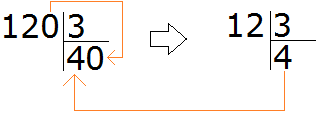
Now multiply the quotient by the divisor (40 by 3) and you get 120. Then we find the remainder: 120 - 120 = 0. The remainder is zero. Example complete.

120 : 3 = 40
Check 40 x 3 = 120.
Such simple examples do not need to be solved with a corner. It is enough to know the multiplication table. Next, simply add zeros at the end. For example:
12 : 3 = 4 (the divisor without zeroes at the end)
120 : 3 = 40 (this one has one zero at the end).
1200 : 3 = 400 (here the subject has two zeros)
12000 : 3 = 4000 (this has three zeroes)
There's a bit of a catch to this method. If you have noticed, by dividing these numbers, we are referring to the multiplication table. Imagine dividing 400 by 5.
We can reason the old way - discard all zeros temporarily and divide regular numbers. But what happens if we discard all the zeros in the number 400? We find that we divide 4 by 5, which is unacceptable. In this case, we should discard only one zero and divide 40 by 5 instead of 4 by 5.
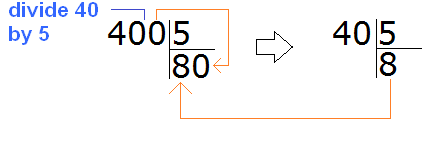
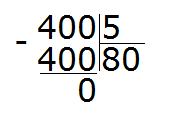
This method works only if you can apply the multiplication table smoothly. In other cases, you have to look for workarounds by calculating the quotient with a column division.
For example, find the value of the expression 1400 : 5. Here, discarding zeros will not give us anything. This example must be solved with a column division, or you can assemble the answer like a construction set. Let's look at the second way.
What is 1400?
Recall the place value. 1400 is one thousand and four hundred:
1000 + 400 = 1400
You can separately divide 1000 by 5 and 400 by 5:
1000 : 5 = 200
400 : 5 = 80
and add up the results:
200 + 80 = 280
Total: 1400 : 5 = 280
Let's solve the same example with a column division:
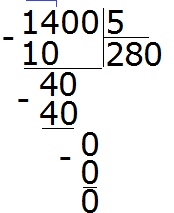
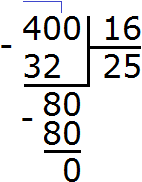
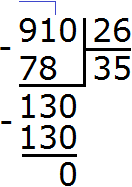
2. If you find an error or inaccuracy, please describe it.
3. Positive feedback is welcome.